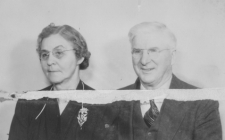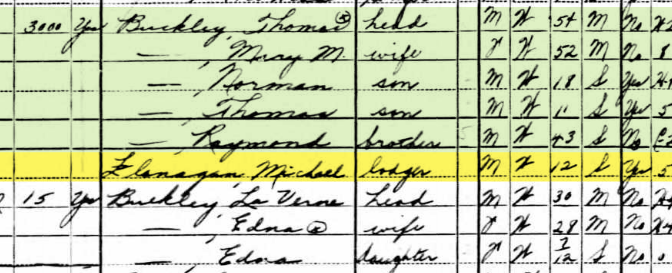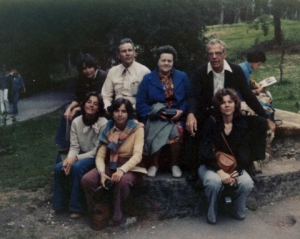 |
| 1940 US Census, courtesy of Ancestry.com. Click on the image to view a larger copy. |
Work at my day job and some personal web development projects in my spare time have kept me away from genealogy work for a couple of months. But, when I read in the news that Ancestry.com just published its index today for New York state 1940 US Census records, I had to hop online and search for my grandfather — Michael John Flanagan — by name.
And there he was. Listed on Enumeration District 15-61, Sheet No. 5 B, for Collins Township, New York, on April 25, 1940. Right on line 56. Living in the Buckley home, listed as a lodger, at the farm on Lennox Road.
 |
| Thomas “Pa” and Mary “Ma” Buckley, my grandfather’s foster parents. |
I already knew that my grandfather was fostered out from the orphan home to the Buckley family as a young child. Grandpa told us many stories about his Buckley foster family, and he deeply loved his older foster brother Uncle Verne and sister-in-law Aunt Edna (whom I met as a baby and young child). Verne and Edna are listed in the adjacent home, with their 7 month old daughter Edna “Edo”. Verne and Edna were really more like parents to my grandpa than a brother and sister-in-law…but that’s another story.
My joy at finding Grandpa on the census is mixed with much sadness though.
Despite living with the Buckleys since he was a toddler, whichever family member spoke to the Census worker (most likely, Mary “Ma” Buckley) referred to my grandfather simply as a “lodger” — not a son or brother, not a foster son or foster brother, not even a ward. A “lodger”. Like young Michael lived there by choice, temporarily. The Buckleys never adopted my grandfather. He remained an orphan his entire life, and he never really had any sense of family until he married my grandmother and had children of their own.
It also saddens me to see that Grandpa was the only Flanagan boy living with the Buckleys by April 1940. I know through the orphan records, and from family recollections, that at least one or two of Grandapa’s older brothers were also placed into foster care with the Buckleys — including Michael’s brother Patrick, who was just one year older than Grandpa. Yet, Patrick (who would have only been 13) and the other brothers are not listed as part of this household. Family members tell me that the other boys all ran away, numerous times. But, Grandpa was too little to take with them. So, he got left behind.
And this was the start of how Grandpa became separated from his brothers. And all alone.
I get choked up every time I think about this because my grandfather — a soft-hearted loving prankster of a man who doted on his children, grandchildren, and great-grandchildren — never quit suffering from the hurt of his childhood. He never knew a sense of family growing up. He never felt wanted as a child.
But, at least Grandpa felt wanted and loved and adored as a husband, father, grandfather, and great-grandfather..and he died knowing this.




